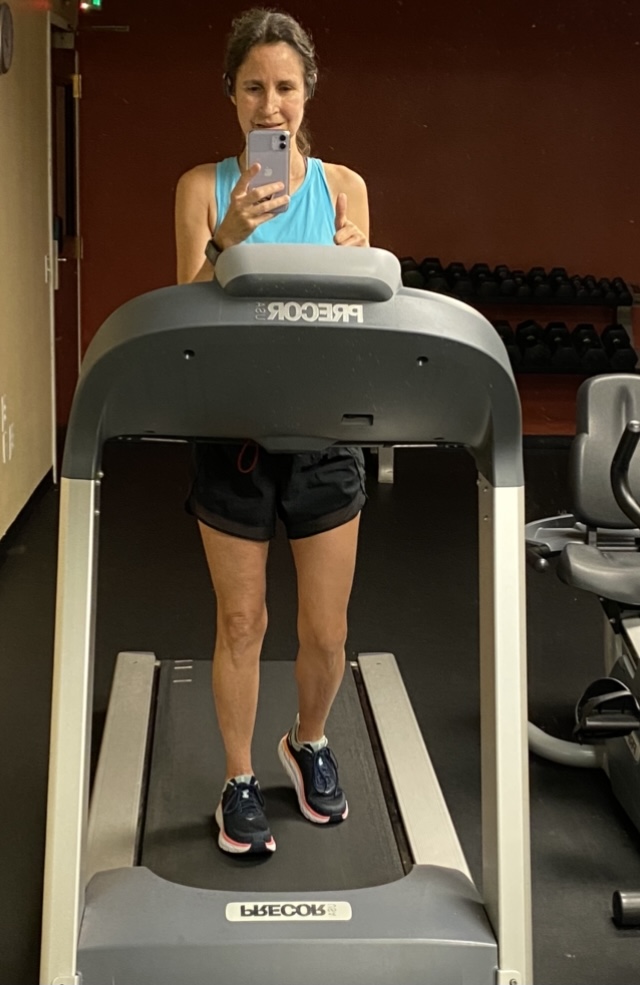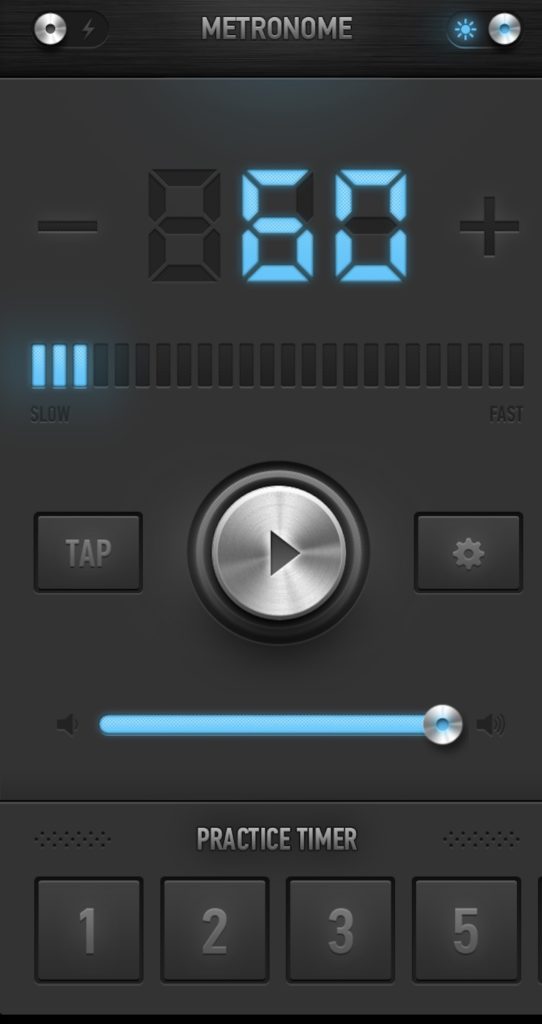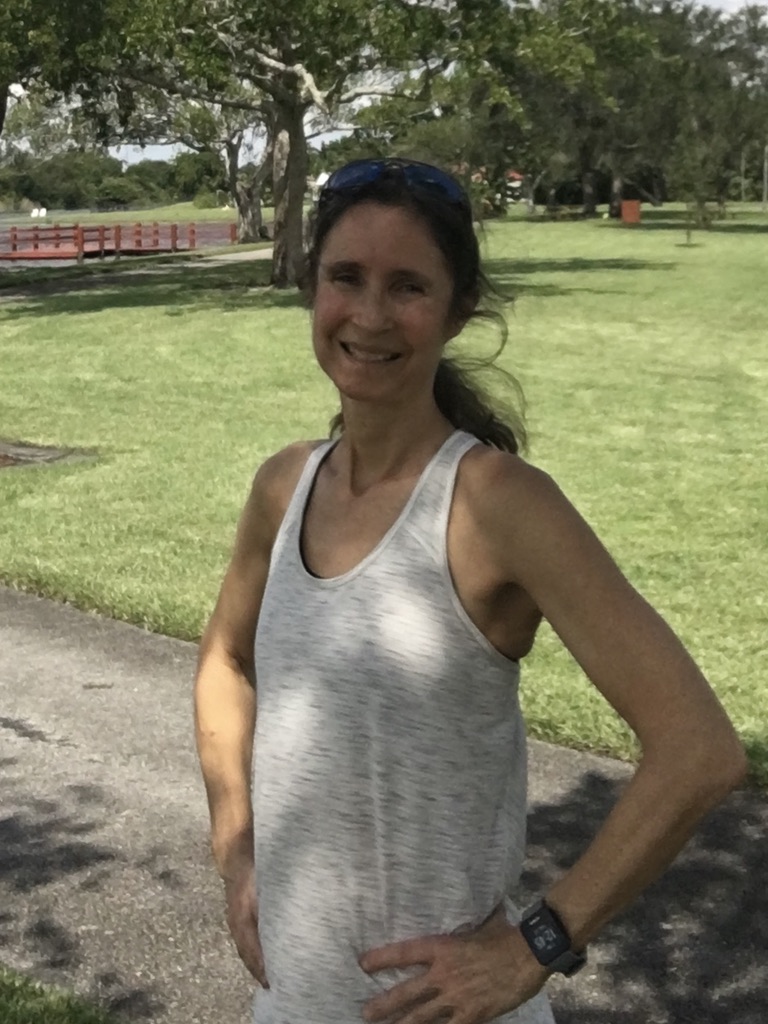Hello and welcome to foot-free Friday! What the heck is that, you ask? Well, in my last post I went into great detail about my visit to the podiatrist, his diagnosis, upcoming treatment, and even included some medical diagrams! After all that, I promised to talk about something OTHER THAN my foot today.
And I am! But first… I’ll just mention that the doctor said I could run during treatment, as long as I don’t go too far (he recommended 3-5 miles.) I also can’t run too fast- he didn’t say that, but my foot has said it, repeatedly. So… I can’t work on distance or speed- seems like the perfect time to work on…
FORM.
Working on running form is tricky. When things are going well, I feel invincible and that my form must be perfect (eye roll.) When I get injured, I realize my form needs work but it’s impossible to work on form when you can’t run. Now that I’m in this no-man’s land of not injured but not really well either, it seems like the perfect time.
Rewind to August when I drove my son to college. One morning I ran on the hotel treadmill, which was positioned right in front of a mirror. This was HIGHLY INSTRUCTIVE.

I already knew my feet cross over my midline in front of me, which is not good. As I ran on the treadmill, it was obvious they were crossing over. First I tried to tell myself “don’t cross over.” Not surprisingly, this did nothing.
I knew that our minds don’t respond well to negative commands. So then I tried thinking “knees straight ahead.” Interestingly, this also had NO EFFECT. I would imagine that by trying to run with my knees straight ahead, I was managing to open up my hips a little (because it certainly felt like my feet were landing far apart) but in reality, it wasn’t enough to be visible.
Since I was on the treadmill, I played around with pace (as one does) and discovered that increasing my pace did help a little. It was when I increased my cadence that I could finally see a difference in my form- my knees were pointing a little straighter ahead and my feet were crossing over a little less.
Ever since then, I’ve paid more attention to my cadence. Your running cadence is simply the number of times your feet hit the ground in a given interval. The “ideal” cadence people shoot for is usually 180 steps per minute, although of course like anything else, there can be individual variations.
This article does a good job of explaining cadence. “The quicker your stride rate, the ‘lighter’ your stride. By reducing your ground contact time, you are minimizing the amount of work your body needs to do for each foot strike, thereby reducing your risk of running injuries over time.” I would add that, the quicker your stride rate, the less time you have to make extraneous movements, like crossing over the midline. It forces your body to be efficient.
The best way to work on cadence is to run to an actual beat, so I downloaded the free MetroTimer app on my phone. In Chi Running, Danny Dreyer recommends running with three steps per beat. In other words, if your goal is to run 180 steps per minute, you set the metronome to 60. That way you land right-left-right on one beat, and left-right-left on the next beat. You don’t want to land on the same foot every time there’s a beat, because you might subconsciously start to land more heavily on that side.

Like any kind of work, you don’t want to go too crazy with it. You risk injury if you change too much all at once. It’s usually recommended to run short intervals at a slightly faster cadence than your norm. 56 was good for me- that would be a cadence of 168, and then every week or so you increase it slightly.
So that’s what I’ve been up to! Inserting short intervals of cadence work into my runs.
Do you ever work on cadence? Ever run with a metronome?






12 Responses
ugh I have tried to work on this before. It is really challenging to change your running form and your cadence. I did use a metronome app for a while a few years back until it drove me nuts. You can learn a lot about your stride by filming yourself. Hope this gives you some more feedback for you to use
Oh yes! Filming myself has been the best. I’m going to use this app sparingly, just a couple times a week for part of a run. We’ll see what happens!
My treadmill sits in front of a window, looking out to our backyard. Though I seldom use it, it’s usually when it’s dark (or dangerous) outside…so that window acts like a mirror. My knees look weird, and I definitely have a good “side-leg” kick thing going on LOL Like Deborah, I’ve tried working on my cadence but it’s really tough to do what doesn’t feel natural. I have noticed running “fast” is easier for me than running “slow”….my form definitely looks better going fast, too.
Yes- I agree that faster running helps improve form. Wow, you practically have a mirror in front of your treadmill! I wish I had that- I can run on the treadmill at my gym but there’s no mirror, so I’d rather be outside (obviously!)
Oh, yes, cadence is so important and can really change your stride… I never wanted to believe it until I used specific playlists with songs with the “right” BPM to work on my cadence. Good for you for working on your form.
Yes, that’s a great idea- I’ve thought about making a playlist like that. Much more interesting than just listening to beeps.
Interesting post. In the past I used a playlist but later I made the decision not to run anymore with earphones because I did not hear cars approaching.
As you know I don’t like to make my workouts on the treadmill.
The good thing about having the metronome app on my phone is that I don’t need to use headphones- but then I am running along, beeping. I could use headphones if I wanted to be more quiet.
That’s funny. I was just talking about cadence with my running friend.
I do look at my cadence. It was 189 in today’s race. So I guess cadence is not my problem.
Wow, you must have been running fast! I’ll have to test out my cadence during speedwork (when I’m actually allowed to do speedwork again!)
I have tried to work on cadence, but mine is just naturally slow. My coach (back when I had one) pretty much freaked out when I told her I was working on it!
I find it interesting that higher cadence doesn’t necessarily equal more speed — but I have trouble simply increasing my cadence!
People have different opinions on cadence. I had worked on it years ago, but for various reasons gave it up. But when I ran on the treadmill and saw how increasing my cadence helped correct my form issues, I decided to work on it again.